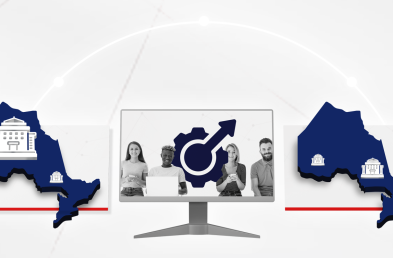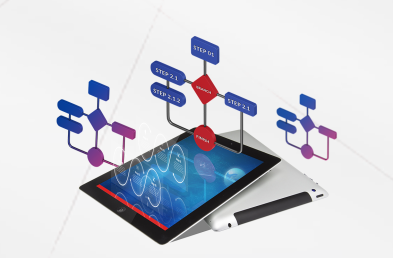Imagine a bustling municipality where employees are busy planning community events, managing public services, and ensuring everything runs smoothly for the residents and the community. Amidst the hustle and bustle, there’s a buzz about a training method called Problem-Based Learning (PBL) being implemented to present an engaging challenge. This isn’t just another lecture or a stack of textbooks; it’s an opportunity to engage and solve real-life challenges.
These challenges are presented in a way that promotes engagement, fosters critical and creative thinking, and helps establish a culture of collaboration and healthy debate. Ultimately, Problem-based Learning boosts your Learning and Development strategies.
Discovering Problem-Based Learning (PBL)
Meet Sarah, a city planner who loves her job but finds traditional training methods dull. One day, her manager introduces her to PBL, explaining that it’s all about tackling real-world problems. Instead of listening to endless lectures, Sarah will now work with her colleagues on actual issues they face in their city — debating, sharing ideas, analyzing processes, and more.
In PBL, the problems are the stars of the show. Sarah and her team might tackle a scenario like reducing processing times for Employee Certifications and training. They gather in groups, brainstorm ideas, and dive into research, all while their supervisor acts more like a guide than a traditional teacher. This self-directed approach helps empower the team and foster Critical Thinking while promoting collaboration.
PBL Goes Digital
The magic of PBL doesn’t stop at the office door. With the rise of online learning, PBL has found a new home on digital platforms. For Sarah, this means she can collaborate with colleagues even when they’re working from different locations.
Imagine Sarah logging into a Learning Management System. Here, she finds discussion forums full of ideas, video conferences where teams brainstorm solutions, and simulations that let them test their plans in a virtual environment.
The flexibility of online learning means Sarah can fit her training around her busy schedule, making learning more accessible and engaging, and access multiple useful resources to craft better solutions.
Comparing PBL and Case-Based Learning
One day, Sarah’s team faces a particularly tricky challenge: designing a new public park. They decide to use both PBL and Case-Based Learning (CBL). While PBL provides them with a broad framework for approaching the problem, CBL provides detailed case studies of successful parks from other cities.
Sarah’s team analyzes what worked in those parks, what didn’t, and what best practices can be applied to her city’s infrastructure, combining these insights with their creative ideas. They explore every detail, from playground equipment to sustainable landscaping.
This mix of broad problem-solving and specific case analysis helps them develop a comprehensive plan for the new green spaces.
Social Learning and Compliance Training
But what about compliance training, often seen as a necessary but dry part of the job? PBL brings even this to life. For example, Sarah’s team is tasked with ensuring their new park complies with environmental regulations.
They use an online forum to discuss the latest regulations, share articles, and even role-play different scenarios to see how their plans hold up under scrutiny. Through these social interactions, they learn not just the rules but the reasoning behind them. Peer feedback helps them refine their ideas, ensuring every aspect of the park meets the necessary standards.
This includes compliance legwork, such as employee certification, permits, health and safety, etc.
Benefits for Canadian Municipalities
Sarah’s journey with PBL highlights the many benefits this method offers, especially for Canadian municipalities. Her problem-solving and analytic skills have improved dramatically. She’s more creative, thinking outside the box to find innovative solutions. Collaboration has become second nature, and she’s constantly engaged and excited to tackle the next challenge.
The adaptability PBL fosters means Sarah is ready for any challenge her line of work can present, whether it’s a change in regulations, figuring out automated strategies for workflow improvement or a new community need. And because much of her training happens online, it’s cost-effective, saving resources while providing high-quality education.
A Culture of Continuous Improvement
The biggest change, though, is the culture shift within the municipality. Sarah’s team is more proactive, constantly looking for ways to improve their work and better serve their community.
They’re not just employees; they’re problem-solvers, innovators, and collaborators—the ultimate combination of skills to create an environment focused on growth and forward-thinking.
The city’s residents start to notice the difference. Services run more smoothly, new projects are implemented efficiently, and there’s a sense of momentum. This is thanks to integrating a learning approach that provides an empowering framework.
Interested in Learning more about Problem-based Learning?
Integrate PBL within your framework and transform your training and workflow into an engaging and effective experience. Send us a message to talk in-depth about Problem-based learning and see how it can help your team.




